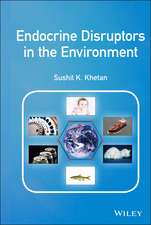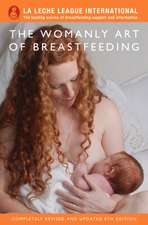The House-Fly: Musca Domestica Linn: Its Structure, Habits, Development, Relation to Disease and Control
Autor C. Gordon Hewitten Limba Engleză Paperback – 8 iun 2011
Preț: 305.66 lei
Preț vechi: 321.74 lei
-5% Nou
Puncte Express: 458
Preț estimativ în valută:
58.49€ • 61.07$ • 48.41£
58.49€ • 61.07$ • 48.41£
Carte tipărită la comandă
Livrare economică 05-19 aprilie
Preluare comenzi: 021 569.72.76
Specificații
ISBN-13: 9780521232999
ISBN-10: 0521232996
Pagini: 404
Dimensiuni: 140 x 216 x 23 mm
Greutate: 0.51 kg
Editura: Cambridge University Press
Colecția Cambridge University Press
Locul publicării:Cambridge, United Kingdom
ISBN-10: 0521232996
Pagini: 404
Dimensiuni: 140 x 216 x 23 mm
Greutate: 0.51 kg
Editura: Cambridge University Press
Colecția Cambridge University Press
Locul publicării:Cambridge, United Kingdom
Cuprins
Part I. The Structure and Habits of the House-Fly: 1. Introduction; 2. The external structure of Musca domestica; 3. The internal structure of Musca domestica; 4. The internal structure of the head a proboscis of Musca domestica; 5. The habits and bionomics of the house-fly; Part II. The Breeding Habits, Life-History and Structure of the Larva: 6. The breeding habits of Musca domestica; 7. The life-history of the House-fly; 8. The external features of the full-grown larva; 9. The internal structure of the full-grown larva; Part III. The Natural Enemies and Parasites of the House-Fly: 10. Arachnids and myriapods; 11. The fungal disease: Empusa muscae Cohn; 12. Insect and vertebrate enemies; 13. Protozoal parasites; 14. The parasitic nematode: Habronema muscae Carter; Part IV. Other Species of Flies Frequenting Houses: 15. The lesser house-fly, Fannia canicularis L. and the latrine fly, F. scalaris Fab.; 16. The stable fly, Stomoxys calitrans L.; 17. The blow flies, Calliphora erythrocephalia Meig. and C. vomitoria L., and the sheep maggot or 'green bottle' fly, Lucilia caesar L.; 18. The cluster fly, Polleina rudis Fab. and Muscina stabulans Fall.; 19. Allied mscid flies and miscellaneous flies found in houses; Part V. The Relation of House-Flies to Disease: 20. The dissemination of pathogenic organisms by flies; 21. The carriage of typhoid fever by flies; 22. The relation of flies to summer diarrhoea of infants; 23. The dissemination of other diseases by flies; 24. Miscellaneous experiments on the carriage of micro-organisms by flies, by both natural and artificial infection; 25. The relation of flies to myiasis and to the spread of intestinal worms; Part VI. Control Measures: 26. Preventative and remedial measures; 27. Organised effort in control measures; Bibliography; Index.
Descriere
This 1914 volume responds rising concerns regarding the role of the house-fly in the dissemination of infectious diseases, and its relationship to unhygienic conditions.









